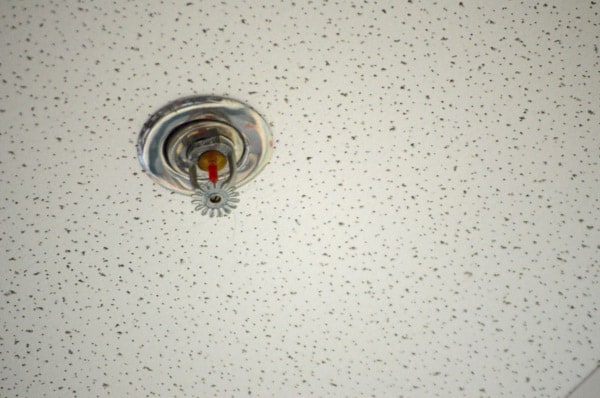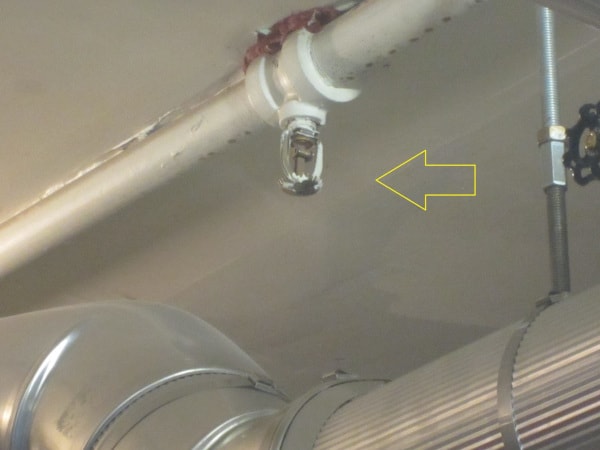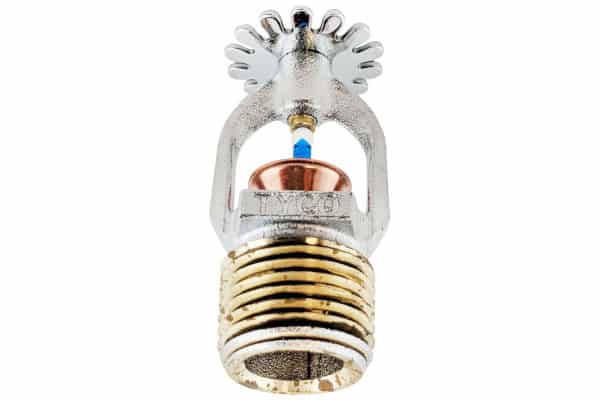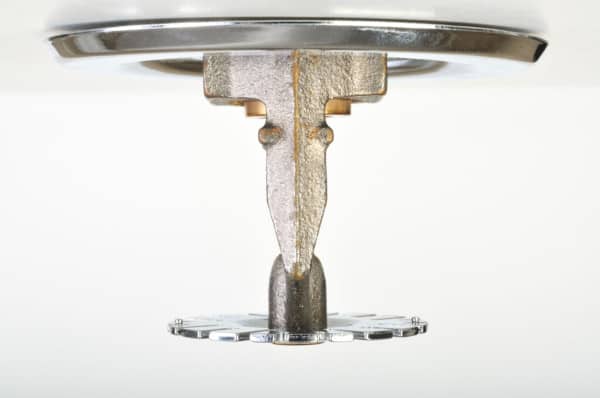The most common fire sprinkler type has an uncommon spelling in American English. The lowdown on pendent vs. pendant sprinklers
Most casual readers of Firehouse’s “400 Terms Every Firefighter Candidate Should Know” will find themselves stumped by more than a few terms. From bight (the knot-tier’s term for a loop in a line) to pawl (a mechanism that locks retractable sections of ladders in place), the fire protection industry has a lexicon that’s rich in history and, at times, a little confusing.
In this article, we take a look at two terms describing one of the most common fixtures in fire protection: “pendent sprinkler” and “pendant sprinkler.” We briefly describe their construction, etymology, and evolution, explaining why many of today’s manufacturers favor one of these two terms (even if consumers and spellcheckers don’t).
Not interested in the finer points of pendent (or pendant) fire sprinklers? Feel free to view our supply of commercial pendent, residential pendent, concealed residential pendent, and concealed commercial pendent sprinklers.
Orientation and design separate pendent/pendant fire sprinklers from other types
Pendent fire sprinklers hang from pipes. Sometimes, those pipes are exposed, but they’re frequently concealed behind ceilings. Most often, these pipes are part of a wet-pipe fire sprinkler system, which contains a supply of pressurized water. Typically, the head of a pendent sprinkler remains visible after installation, although some of these sprinkler heads hide behind a decorative, temperature-sensitive cover plate.

Like other sprinklers, when surrounding temperatures exceed specified limits, a heat-sensitive element—either a glass bulb or a “fusible” metal link—breaks or detaches, releasing a plug. As that plug falls, water discharges, colliding with a circular deflector to produce a domed or cone-shaped spray of water.
Mainly, it’s the orientation—the direction the sprinkler points—that distinguishes pendents from other sprinkler types. Some heads shoot water up before directing it to spaces below (upright), while others point horizontally (sidewall). But a pendent sprinkler head isn’t just an upside-down upright head.
Pendent heads feature a convex, almost umbrella-shaped deflector that guides water out and away from the sprinkler head when properly installed. In contrast, deflectors on upright heads curve toward the piping, catching and redistributing water as it shoots toward the ceiling. Installing one in the place of the other can have serious repercussions, drastically reducing both range and fire-fighting capability.

While pendant and pendent both have historic claims, pendent best describes orientation
Both “pendant sprinkler” and “pendent sprinkler” have taken turns as the leading search result for one of the most common fixtures in fire protection. For speakers of American English (and most spell-check apps), pendent seems like an awful lot like a misspelling of the jeweler’s pendant. But a glance at products from global manufacturers from Victaulic and Viking to Tyco go with “pendent” anyway. Why?
Since 1874, when Henry Parmelee patented what may have been the world’s first practical automatic sprinkler heads, inventors have filed for numerous new patents on sprinkler heads. These patents, which sometimes call sprinklers “fire extinguishers,” use the terms pendent or pendant fire sprinklers almost interchangeably. Underwriter’s Laboratory applied the term “pendent” to fire sprinklers as early as 1918, and the Engineering and Mining Journal carried an advertisement for a “pendant” sprinkler as early as in 1890.

But a closer look at one filing from the late 19th century suggests that pendent describes a mounting position, saying that the head is “adapted to be used pendent or in the position the reverse of pendent.” And while filings as late as 2012 still use the alternative spelling pendant, it’s pendent that seems to have the stronger linguistic claim. Since the 14th century, pendant-with-an-“A” has served as a noun, first describing a loose or hanging part (of anything) and, later, the dangling part of an earring. Pendent-with-an-“E” emerged two centuries later as an adjective, describing something “hanging” or “overhanging.”
Uses of the term sometimes describe plants: when flowers, branches, and leaves hang, botanists sometimes say they become pendent. But, in short, the word pendent—like the words upright or horizontal—is an adjective that pairs with a wide variety of words, including “sprinkler,” to describe the orientation.
Beyond the name, pendent sprinklers continue to evolve
Over the years, inventors and industry-leading firms have improved on the design of pendent sprinklers with innovations such as:
- Adjustable pendent sprinklers for dry-pipe systems that give installers leeway by lengthening the connection between the sprinkler head and pipe as needed
- Enhanced-protection pendent sprinklers that extend sprinkler coverage areas to 189 square feet (17.6 square meters)
- Residential pendent sprinklers designed to meet UL and NFPA standards for use in family homes and residential buildings of all kinds
- Highly compact pendent fire sprinklers made to be inconspicuous and space-efficient
If you’re searching for the latest and greatest in sprinkler heads for industrial, commercial, or residential use, take a look at the selection available through QRFS. Our stock includes UL-listed and FM-approved pendent sprinklers from leading manufacturers like Tyco, Senju, Victaulic, and Viking. With a wide range of finishes, response types, and temperatures available—and lead-free options for residential sprinkler systems—QRFS has pendent heads for almost any need.

Check our selection of commercial pendent, residential pendent, concealed residential pendent, and concealed commercial pendent sprinklers.
Need to know more about pendent sprinkler heads? Having trouble choosing the one that’s right for you? Crazy spelling and the details of word etymology got you down? Call us at +1 (888) 361-6662 or email support@qrfs.com.
This blog was originally posted at blog.qrfs.com. If this article helped you understand pendent and pendant fire sprinklers a little better, check us out at Facebook.com/QuickResponseFireSupply or on Twitter @QuickResponseFS.



Based on the analysis presented in this article, it seems that the sprinkler itself would be a pendant. Or put another way, a sprinkler in the pendent orientation is a sprinkler pendant. For example, you could have a pendent pendant, but you could not have a pendant pendent. So if you are using “pendent” with an E, you are describing a generic sprinkler, rather than giving the name of a specific one.
Doug — Regardless of any of our linguistic analysis, we have never seen a pendent sprinkler referred to as a “pendant” in industry data sheets, standards, or other materials (not counting random online articles or blogs, subject to grammar checkers that always correct it). The fire protection industry uses the term “pendent” in official documents. For example, a search for the term “pendant” in NFPA 13 turns up 0 results. Thanks for reading and your comment!